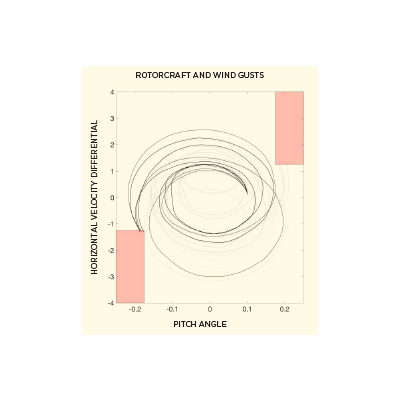Real-world geometries, wind tunnel tests bring improved results
By NATHAN HARIHARAN|December 2018
The Applied Aerodynamics Technical Committee emphasizes the development, application and evaluation of concepts and methods using theories, wind tunnel experiments and flight tests.
The CFD Vision 2030 report published in 2014 formed the basis for NASA to perform validation experiments, including some this year, that will enable the accurate prediction of unsteady separated flows. NASA, with an integrated team of computational and experimental researchers, designed a validation experiment to assess the flow at the wing-body juncture, and in May and June finished installing the required model in the 14-by-22-Foot Subsonic Wind Tunnel at NASA’s Langley Research Center in Virginia. Using a unique on-board Laser-Doppler Velocimetry system specifically designed for measuring the near-wall juncture region flowfield through windows built into the model, unsteady velocities and velocity moments were measured over the fuselage and wing, and in the separation region. Additional data included steady and unsteady pressures, time-resolved particle image velocimetry, unsteady surface shear stress, optical measurements for model deformation, and infrared thermography to document flow transition characteristics. These data will be available for computational fluid dynamics researchers worldwide for the validation and aid in improving the capability to predict turbulent separated flows.
A finding of the 2018 Sustainable Aviation Symposium in May was that, for electric aircraft, high-torque, low-RPM “many blade” rotors retain high efficiency while limiting both diameter and noise for a given thrust. Such low speed and high torque dovetails with the near-term development of motor-generators specially tailored thereof.
The year also saw big leaps in the capability to automate numerical grid generation processes and robust solution processes that can produce accurate solutions on such automatically generated grids. Real world geometries such as full helicopter or aircraft have presented challenges for strand overset meshing, but in the last few years, significant advances in robust, automated near-field meshing capabilities in conjunction with overset grid solution strategies that allow for self-intersecting grids have overcome such issues. Researchers at the U.S. Army’s Aeroflight Dynamics Directorate at Moffett Field, California, demonstrated simulations on automatically constructed strand meshes — generated in parallel at runtime. This was done on real-world geometries such as the Japan Aerospace Exploration Agency Common Research Model used in June at the AIAA High Lift workshop, the Pressure-Sensitive Paint rotor used in the AIAA Rotor Hover workshop, and a UH-60A aircraft. Accuracy was shown to be comparable to calculations on traditional structured and unstructured meshes. All strand calculations were performed using the Defense Department’s High Performance Computing Modernization Program, or HPCMP, CREATETM-AV Helios code, the first widely available production code with support for such strands grids.
Engineers at the U.S. Army Natick Soldier Research Development and Engineering Center in Massachusetts made significant advances in accurately modeling and predicting parachute behavior for Army operations. Working in collaboration with the High Performance Computing Research Centers at the U.S. Air Force Academy, flow field predictions for a C-130J in personnel airdrop configurations have aided safety investigations and informed the design of a new parachute deployment system. Unique to these simulations was the addition of propeller wakes using the fixed-wing software suite HPCMP CREATETM-AV Kestrel. The group also teamed with computational engineers at Georgia Tech to investigate helicopter sling load dynamics. Using Kestrel and its rotorcraft counterpart Helios, this work is providing data for sling load flight certification.
In collaboration with NASA’s Jet Propulsion Laboratory and Ames Research Center in California, Stanford University in the first three months of the year developed a high-fidelity, multidisciplinary computational approach for the simulation of supersonic parachute inflation dynamics and the prediction of the associated drag and structural integrity.
Contributors: Chris Rumsey, Nathan Hariharan, Andrew Wissink, Charbel Farhat, Keith Bergeron, Jennifer Abras
Photo: Unsteady solution of a UH-60 in forward flight using fully automated strand gridding/solution methodology. User provides surface grids, and entire volume grid sequence is generated during runtime. Credit: Andrew Wissink/U.S. Army



































